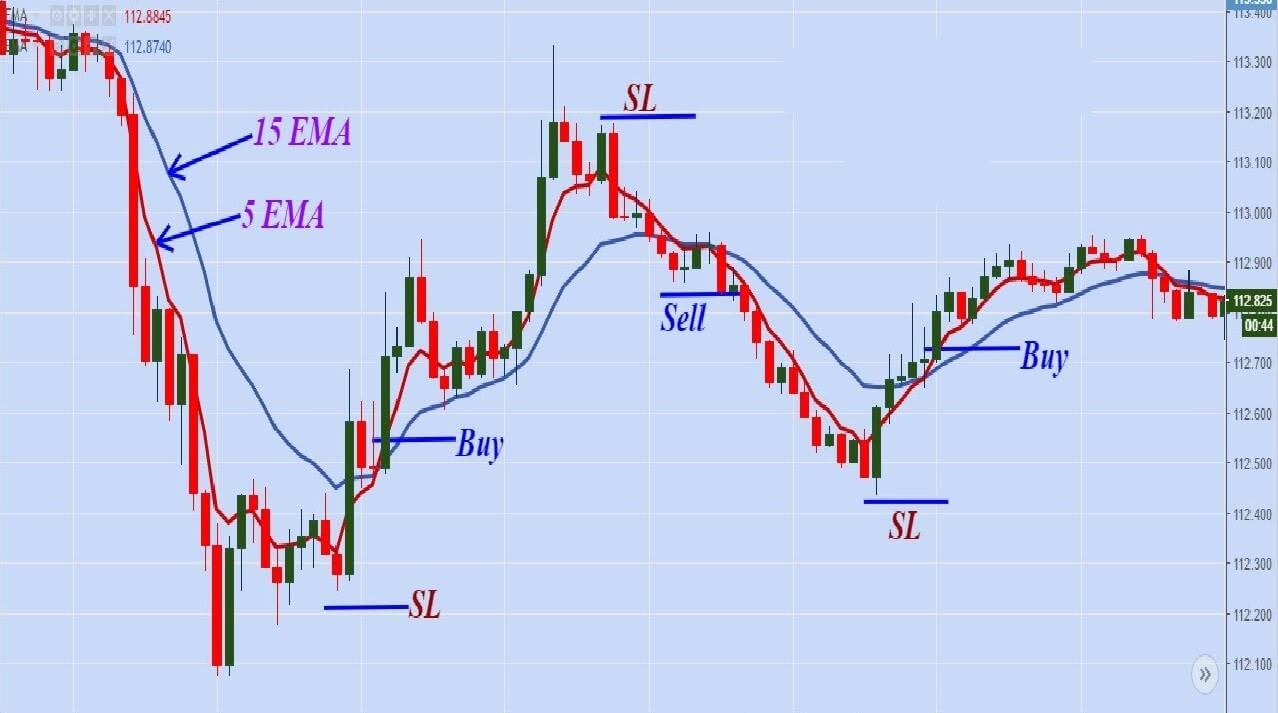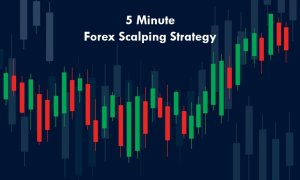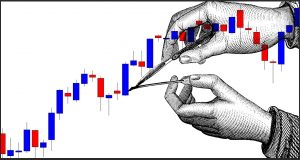Scalping strategies on Forex are quite popular among beginner traders, although it is not really fully justified. High-frequency trading (keeping the market position for a very short time) allows quick real-time gains and avoidance of swaps. In short periods it is difficult to make an accurate forecast. The scalping training in a demo account allows the beginner trader to improve the speed of being able to react and learn how important it is to understand intuitively the behavior of all members of the financial markets. However, it is better to open real operations in longer periods. From this summary, you will learn what is scalping, what are its advantages and disadvantages of high-frequency trading, and also you will know practical examples of strategies.
Scalping for Beginners
Scalping is a high-frequency operation that provides earnings on a set of trades in a short period of time. For traders just starting to trade, this trading strategy is considered dangerous because the trend is chaotic in short-term charts (the so-called price noise effect) and therefore can hardly be predicted. On the contrary, I think a beginner should train scalping before dealing with medium and long-term trading strategies. Scalping helps train attention, reaction speed, and visually shows gliding problems. Although you should be highly focused and emotionally stable when using scalping, if you have understood the theory, the strategy is an excellent simulator for practicing these skills.
What is Scalping?
What is scalping in Forex trading? The perception is that this is a type of trading where A scalping trader performs many operations in a very short time and closes them in minutes. Actually, this is not a very accurate definition. Scalping suggests placing orders a short distance from the opening point. The trader leaves the trade in a short time, as soon as the price changes at least a few points, including the spread. Even an open transaction based on this principle already refers to scalping. Logically, to make a profit, a trader must make dozens of such transactions in one day, but their number is not that important. One of the conditions for successful scalping is to pick up a good time in relation to predictable volatility.

Types of Scalping
Scalping in the news. At the time of departure of important news or the publication of economic data, there is a very significant increase in volume and volatility that can last from a few minutes to a few hours. This is the best time for scalpers. There are two ways to operate:
Placing opposite pending orders a few minutes before publishing statistics and removing the order that does not work after publishing. The opening of several short-term trades for directly correlated pairs in the first few minutes after the publication of news in the main trend direction. Making money using such a strategy is quite difficult. Both methods are not perfect and have their advantages and disadvantages, read more about them in this summary.
Types of scalping depending on the time frame chosen:
Pipsing: It is called the most profitable and risky strategy (in terms of profit, the issue is very controversial). Trading takes place in the M1 interval, transactions are carried out in the market for a few minutes. It happens that 1-2 points are enough for the scalper since maximum leverage is used (sometimes up to 1:1000).
Medium-term scalping: Suggests a relatively fewer number of open trades, the duration of which is 5-15 minutes. The range is M5. The size of the leverage is determined by the trader.
Conservative scalping: Transactions can last up to 30 minutes, the time frame is M15.
Types of scalping according to technical strategies:
Scalping with analysis of various time frames. Such a strategy is applied when negotiating with the short-term trend. It is possible to invest at virtually any time, so classic trend negotiation strategies for time frames per hour will not work there. Such a trend may arise, for example, during a brief pause before the news release, which is quite controversial, judging by the forecasts. Or you can start during a temporary balance of bulls and bears. The essence of the strategy: this type suggests that you identify the beginning of a trend in the H1-H4 range by means of a trend indicator or a confirmation oscillator. Then, analyze the market and look for signals in the M5 timeframe. I will detail later with an example about this particular strategy.
Trading based on major currency pairs. The main pair is the pair, through which the scalper makes trading decisions, but carries trading on a correlated pair that is a bit behind. For example, the EUR/USD pair reacts immediately to the publication of US statistics. If EUR/USD and USD/JPY are increasing, then EUR/JPY will also increase.
Intuitive scalping. Considering that a scalper has little time to make decisions, there is a category of traders that use their intuition. They can interpret the market in a very intuitive way and for that reason, they do not need technical indicators.
I will not describe the subdivision by the type of indicator (graph, level analysis, etc.) as it is logical. The rating can be expanded, and I would appreciate it if you, my dear readers, would help me by offering your scalping strategies variants in the comments located at the end of the article.

Rules for Successful Scalping
There should be no restrictions by the broker to employ such strategies. There should be no restrictions on the offer with respect to the number of open trades and the minimum waiting time.
Instantaneous execution of orders: It depends largely on the broker, liquidity providers, the Internet connection, and the trading platform itself.
Great financial leverage: Professional scalpers work with leverage of 1:500-1:1000, but according to European regulators’ standards, maximum leverage is reduced to 1:50. The instrument should have the best liquidity.
So what is scalping in trading? I think is clear. Let’s move on to the advantages and disadvantages of strategy.
Advantages of Scalping Strategies
It is trading based on fundamental analysis. Technical indicators are rather used as complementary tools due to price noise in shorter time frames. Although it is not recommended to beginners to negotiate with news, in terms of training and use of simulators, this can be easier and more interesting than technical analysis. It’s all subjective, but I’d say this is a benefit of scalping.
Gives you the real chance to make a considerable profit. Everything is questionable, but before a professional, high-frequency trading can generate higher returns compared to daily trading strategies. In scalping, a trader manages to win on almost all price changes in both directions, on the contrary, in intraday trading, a significant part of the profit is “lost” due to setbacks and corrections. Besides, it doesn’t depend on the trend.
Scalping allows for profit when the market is traded unchanged. There are no swap costs (to keep the position open until the next day). I’d say the biggest advantage is training to negotiate scalping. With high-frequency trading, the trader has the ability to learn to understand much better the market inputs and outputs, the nature of the market, and self-development of intuition. After mastering scalping which is much more complex, intraday and long-term strategies will seem easier.

Disadvantages of Scalping Strategies
Spread: No matter how long your position stays open, the difference will be the same. A scalper takes most of the benefits.
Technical problems: Slippages, delay in execution of orders, platform failure, etc. In scalping, only a second is sometimes important, and a delay can result in a loss that can exceed a small gain. In scalping, only a second is sometimes important, and a delay can result in a loss that can exceed a small gain.
Market noise: Random price changes, insignificant for long-term periods, can close the order with a stop in short-term periods.
Limited choice: Only liquid currency pairs with moderate volatility are suitable for Forex scalping trading. Exotic pairs are not appropriate. The problem of precise quotations and broker restrictions. Some companies prohibit scalping or there is a restriction on the minimum waiting time for negotiation.
Emotional stress means the need to be focused on the small details. You must control your operations all the time and make your decisions quickly. At some point, a reseller will feel emotional exhaustion and lose their target. This problematic situation can be resolved through the use of robots and scripts.
In order to obtain the greatest benefits in scalping, it is very necessary to use fairly high leverage, and clearly, this circumstance significantly increases the risks. But even so, despite all the downsides of scalping trading, scalping is, in the first place, satisfaction and excitement. That’s why many traders like it a lot.
Conclusion
Scalping is one of the currency trading strategies suitable for both currency pairs and other asset CFDs. Scalping is convenient in flat trading and when the market is not trending. Some people consider it highly profitable, others say it is very risky. In any case, before trading with a scalping, any scalping strategy needs to be practiced and enhanced in a demo account. My wish is that this article might have helped you respond to the questions you had.





